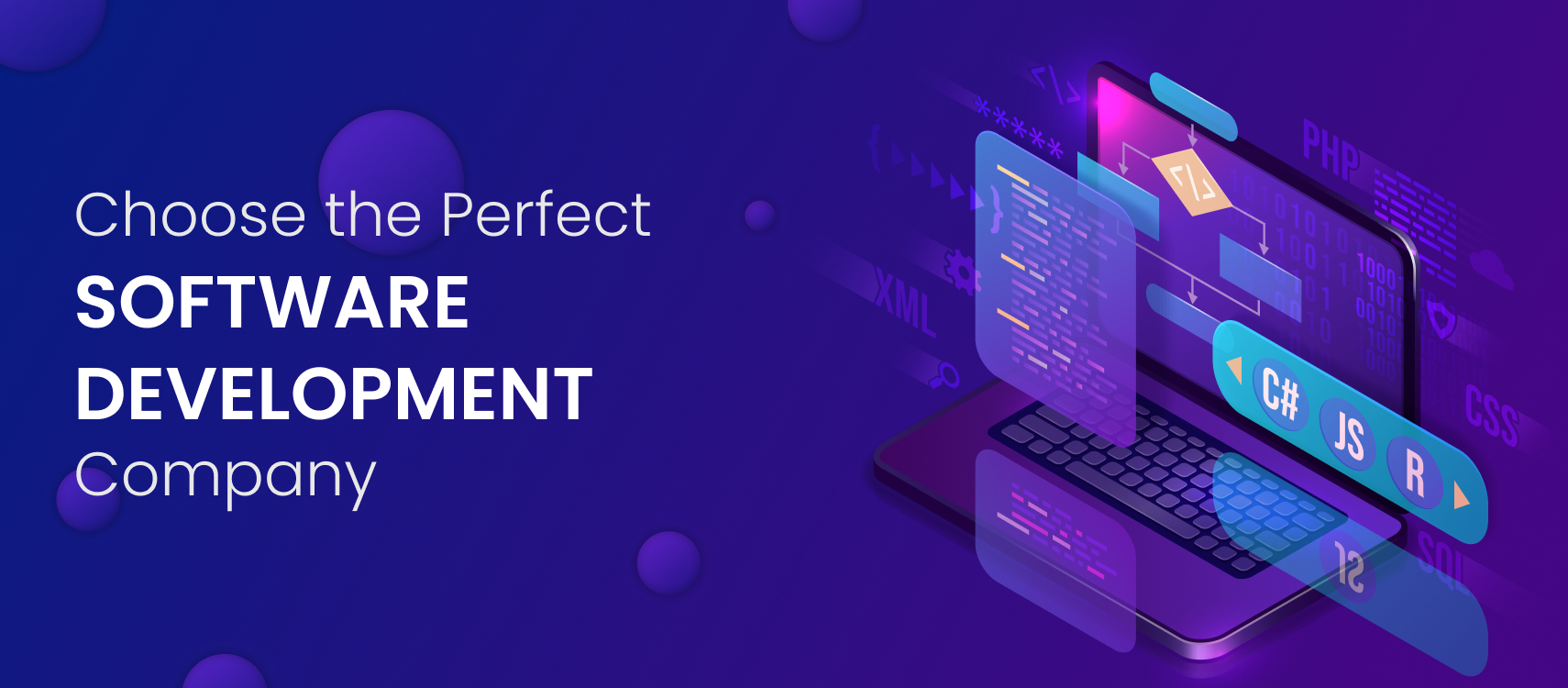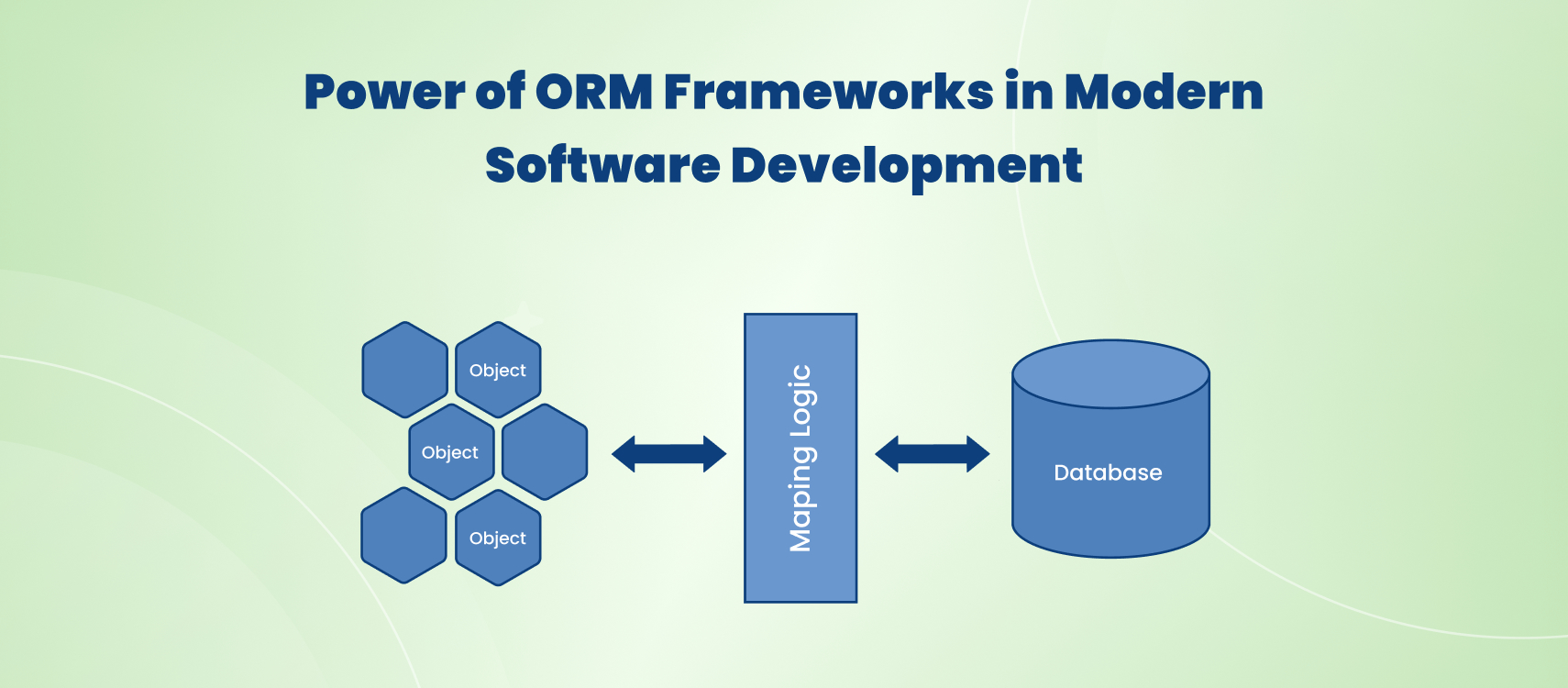Table of Contents
- What is Co-Development Software
- How Co-Development Works
- Challenges and Solutions
- Why Choose Co-Development
- When to Use Co-Development
- Traditional vs. Co-Development
- Key Features of Co-Development
- The Role of Agile and DevOps
- EncodeDots Empowers Co-Development
- Conclusion
- FAQs on Co-Development Software
Explore how co-development software, now powered by AI agents and real partnerships, goes beyond human collaboration to unlock smarter, faster software creation.
What if you could build better software not by working harder, but by working together across time zones, roles, companies, and even with AI collaborators? That’s the promise of co-development software.
Delivering a high-impact software product and smarter outcomes requires more than completing tasks; it calls for shared ownership, fluid collaboration, adaptable tools, and the right partners by your side.
As software systems become more complex, more organizations are turning to collaborative approaches. This shift is transforming the software development process, enabling faster delivery, stronger alignment, and deeper innovation.
At the core of this evolution is the use of co-development platforms that support both human teams and AI agents.
In this guide, we’re diving into an exciting and challenging ‘word game’: how co-development software supports software co-development, step-by-step. Whether you work with an in-house team, collaborate with external teams, or manage distributed development teams, this model enables effective collaboration.
What is Co-Development Software?
Software for co-development describes systems that allow in-house and outside coding teams to work together in real time on the same code, infrastructure, or digital product. These systems play a crucial role in today’s software projects where getting teams on the same page is key.
Unlike siloed workflows common in traditional software development, co-development encourages simultaneous contribution, transparency, and shared development responsibilities. It fosters team collaboration across organizations while supporting clear ownership of project goals.
These platforms go beyond classic tools. They integrate version control systems, task tracking, continuous integration, and communication tools like chat and video conferencing. Many also connect with cloud computing platforms to enhance flexibility.
At their core, these systems lay the groundwork to create software as a team. They help different groups adjust to project changes back step-by-step growth, and churn out results quicker with less back-and-forth. This goes beyond simple teamwork it’s about joining forces to build better.
How Co-Development Works
Working together to create software goes beyond splitting up jobs between two groups. It’s about teaming up to come up with new ideas, sharing responsibility, and creating better programs by combining know-how. Whether you’re partnering with a tech company, a team that works from afar, or a specialized supplier, successful teamwork in software development follows a clear, well-organized approach.
Let’s walk through the key stages of how co-development works in a modern, Agile-driven environment:
Project Alignment & Planning
Before any code is written, both teams must align on the product vision, business goals, success metrics, and technical architecture. This phase is all about building a strong foundation.
Here’s what typically happens:
- Shared understanding of the problem to solve and the target users
- Agreement on roles, responsibilities, and decision-making processes
- Selection of the tech stack, tools, and infrastructure
- Establishment of communication protocols, such as weekly syncs, Slack channels, or project dashboards
This planning ensures everyone is on the same page and sets the tone for a productive partnership.
Shared Development Workflow
Once the plan is in place, work begins-collaboratively. Tasks are divided based on each team’s strengths and areas of expertise.
For example:
- Your internal team may focus on user interface (UI), user experience (UX), and aligning the product with business needs.
- The co-development partner might specialize in backend architecture, database optimization, integrations, DevOps, or AI features.
Both sides work from a central backlog of tasks, managed in tools like Jira, Trello, or Azure DevOps. This ensures transparency and coordination, with everyone contributing to a shared outcome.
Agile Collaboration
Co-development works best within an Agile framework. Teams operate in short development cycles (called sprints), with regular check-ins and planning meetings.
Agile collaboration includes:
- Daily or weekly stand-ups (virtual or in-person)
- Sprint planning and review sessions
- Use of shared tools like GitHub for version control, Figma for design collaboration, and Confluence for documentation
- Real-time progress tracking and updates
This rhythm keeps both teams aligned, reduces delays, and encourages continuous improvement throughout the development process.
Code Review & Continuous Integration
Code quality and consistency are essential in a co-development setup. That’s why code review and integration are shared responsibilities.
Here’s how it works:
- Developers on both teams review each other’s code, ensuring it meets agreed-upon standards
- Automated tests run as part of the CI/CD (Continuous Integration/Continuous Deployment) process
- Code is regularly merged into a shared repository to prevent conflicts and keep the product evolving smoothly
This stage ensures the software remains stable, secure, and easy to maintain, regardless of how many people are contributing.
Joint QA, Testing & Deployment
Before any feature goes live, both teams participate in quality assurance (QA), user testing, and deployment. This final phase ensures the product performs well across all environments and meets user expectations.
Typical activities include:
- Manual and automated testing to catch bugs and performance issues
- User Acceptance Testing (UAT), often involving stakeholders or end-users
- Collaborative feedback loops, allowing both teams to suggest improvements
- Joint deployment, often automated via CI/CD pipelines
By working together at every stage-from code to customer-co-development teams deliver more reliable, user-friendly products.
Challenges and Solutions in Co-Development Software
When companies use co-development to make software with external teams or vendors, they gain rapid progress, benefit from wider experience and reduce the risks of taking on innovation. Even so, database development has its own problems when done by multiple people.
Problems like insufficient communication and poor quality code can stop development from moving forward. There is some good news. The right way to handle a situation allows it to have an obvious resolution.
We will look at the most usual difficulties in co-development and how to address them well.
Misalignment on Goals and Expectations
Problems can arise when both internal and external teams disagree on what is to be built or on the timing which might result in redoing work, frustration or delays.
Solution:
Start with strong onboarding and clear documentation. Define:
- A shared product roadmap
- Roles and responsibilities for each team
- KPIs and success metrics
- A communication plan (e.g., weekly check-ins, Slack channels, dashboards)
Using tools like Notion, Confluence, or Google Docs to create a central “source of truth” helps maintain alignment throughout the project.
Time Zone Differences and Scheduling Conflicts
Distributed teams often work in different time zones, making it difficult to schedule meetings, resolve issues quickly, or collaborate in real time.
Solution:
Implement asynchronous collaboration practices, such as:
- Using project management tools (e.g., Jira, Trello, Asana) to log tasks and progress
- Recording meetings and sharing recaps
- Setting a few overlapping “core hours” for real-time discussions
- Clearly defining deadlines and turnaround expectations
Tools like Loom, Slack threads, and time zone-aware calendars can bridge gaps and minimize delays.
Communication Gaps
Poor communication can lead to misunderstandings, redundant work, or conflicts-especially when teams use different terminology, methods, or work cultures.
Solution:
Build a communication-first culture by:
- Agreeing on preferred tools (Zoom for meetings, Slack for chat, Google Meet for demos, etc.)
- Encouraging regular updates and check-ins
- Documenting decisions, changes, and processes transparently
- Appointing a liaison or project manager to coordinate communication
When everyone knows where to go for information-and who to ask-it becomes easier to stay aligned.
Inconsistent Code Quality or Development Standards
When teams follow different coding standards, deployment practices, or testing protocols, it leads to messy integration, technical debt, or software instability.
Solution:
Create a shared technical standard that includes:
- A project-wide coding style guide
- Unified CI/CD pipelines and version control workflows (e.g., Git branching strategy)
- Agreed-upon testing practices (unit, integration, end-to-end)
- Mandatory peer code reviews
Using tools like ESLint, Prettier, SonarQube, and GitHub Actions ensures consistent quality across all contributions.
Challenge: Security and Access Management
Giving external partners access to sensitive data or internal systems can pose security risks if not handled properly.
Solution:
Use role-based access control (RBAC) and implement:
- Separate development environments
- Limited API keys or temporary credentials
- NDA agreements and data protection policies
- Cloud tools like AWS IAM, Azure AD, or Google Cloud IAM to manage permissions
Always follow the principle of least privilege-give access only to what’s necessary.
Challenge: Slower Decision-Making
When multiple teams are involved, decisions can take longer due to differing opinions, unclear authority, or slow feedback loops.
Solution:
Speed up decision-making with:
- A single point of contact or project owner on each team
- Pre-defined workflows for approvals and escalations
- Real-time collaboration tools like Miro, Figma, or Google Docs for brainstorming
- Stand-up meetings with decision agendas
Clear ownership and agile processes ensure faster, more confident decisions.
Integration with Legacy Systems or Tools
Co-development projects may need to work with outdated systems or third-party software that slows down progress or creates friction.
Solution:
- Conduct a technical audit during planning
- Design a modular architecture (e.g., using microservices) for easier integration
- Use API gateways or middleware tools to bridge compatibility gaps
- Schedule buffer time for unexpected legacy challenges
Transparency about technical debt helps both teams plan realistically.
Why Businesses Choose Co-Development
A Smarter Way to Build Software with Speed, Flexibility, and Shared Ownership
In today’s fast-paced digital world, companies are under constant pressure to deliver innovative software solutions faster, better, and more cost-effectively. But building a strong in-house development team from the ground up can be expensive, time-consuming, and hard to scale.
That’s why more and more businesses are turning to co-development, a collaborative model where internal teams partner with external experts to build software together-not just outsource it.
So, what makes co-development such a compelling choice for modern businesses? Let’s explore the key reasons and benefits in detail:
Speed Up Time-to-Market
Time is money especially when you’re racing to launch a new app, feature, or digital product.
With co-development:
- You can divide work across teams, allowing development to happen in parallel instead of sequentially.
- External partners help accelerate delivery timelines, often bringing ready-to-go frameworks, tools, or reusable code libraries.
- Agile methodologies, joint sprints, and continuous integration keep progress consistent and trackable.
The result? Products get to market faster-without compromising quality.
Access to Specialized Talent
Hiring full-time developers, designers, or data engineers is not only expensive but can also take months. And in fields like artificial intelligence, cloud computing, or blockchain, the talent pool is both limited and competitive.
Co-development gives you on-demand access to:
- Domain-specific experts (e.g., DevOps engineers, machine learning specialists)
- Designers, QA testers, and architects with niche technical experience
- Teams who stay up-to-date with the latest tools, frameworks, and compliance requirements
You gain instant technical depth-without long-term hiring commitments.
Flexibility & Scalability
Every project has different demands. Some need rapid scaling; others might require just a few specialists for a short period.
Co-development offers:
- Scalable team sizes, so you can expand or contract your workforce as the project evolves
- The ability to adapt to changing priorities or timelines without overloading your in-house team
- Greater agility when testing new ideas, entering new markets, or handling surges in user demand
It’s like having a software team with a built-in volume dial-you control the pace and size.
Shared Ownership, Reduced Risk
Unlike traditional outsourcing-where you hand over the project and hope for the best co-development keeps you in the driver’s seat.
Benefits of this collaborative approach include:
- Transparency: You’re involved in every phase-from planning to deployment
- Accountability: Both teams share responsibility for results, ensuring quality and alignment
- Adaptability: You can quickly course-correct based on feedback, new business goals, or market shifts
This model builds mutual trust and minimizes the risk of miscommunication or off-track delivery.
When to Use Co-Development
Co-development is a powerful approach that allows businesses to join forces with external experts to build software collaboratively. But like any strategy, it works best in specific situations. Knowing when to use co-development can help you maximize benefits, avoid pitfalls, and accelerate your product’s success.
Here are some common scenarios where co-development is the ideal choice:
You’re Launching a New Product or MVP
Bringing a new product or Minimum Viable Product (MVP) to market quickly requires speed, agility, and a broad skill set. Your internal team may be great at defining business needs and UX design, but you might need extra technical firepower to build, test, and deploy rapidly.
With co-development:
- You get access to a dedicated development partner who can jump in immediately
- Multiple teams can work in parallel on different components, accelerating delivery
- You retain control over vision and strategy while benefiting from specialized technical expertise
This makes co-development a perfect fit for startups and businesses wanting to validate ideas fast without compromising quality.
Your Team Lacks Specific Technical Skills
Technology evolves fast, and sometimes your in-house developers may not have expertise in highly specialized areas such as:
- DevOps and cloud infrastructure management
- Machine Learning (ML) or Artificial Intelligence (AI)
- Complex API integrations or blockchain development
Hiring full-time experts for short-term needs can be costly and inefficient. Instead, co-development allows you to:
- Bring in specialists on-demand who have proven experience
- Reduce training and ramp-up time
- Ensure high-quality delivery of complex features without overburdening your team
You Want to Modernize Legacy Software
Legacy systems can hold back your business by being slow, insecure, or incompatible with modern platforms. But rewriting or upgrading legacy software is often risky, costly, and time-consuming.
Co-development helps by:
- Providing a partner experienced in modernization projects
- Allowing your internal team to focus on day-to-day business while the external team handles technical refactoring
- Phasing modernization in manageable sprints, minimizing disruption
Together, you can breathe new life into aging software while controlling risks.
You’re Scaling Quickly and Need Extra Bandwidth
When your business experiences rapid growth, your product development demands can quickly outpace the capacity of your internal team.
Co-development offers:
- The flexibility to scale your development team up or down as needed
- Additional bandwidth to handle urgent bug fixes, feature launches, or user demands
- A reliable extension of your team that integrates seamlessly into your existing workflows
This ensures you never miss critical deadlines or market opportunities due to limited resources.
You Want to Experiment with New Technologies Without Long-Term Commitments
Trying out new technologies-whether it’s exploring blockchain, AI, or emerging frameworks-can be expensive and risky if you invest heavily upfront.
Co-development allows you to:
- Pilot projects quickly with expert help
- Validate ideas before making large investments
- Adapt or pivot easily based on early results without long-term hiring or infrastructure commitments
This approach reduces risk while unlocking innovation opportunities.
Traditional vs. Co-Development Approaches
Software development has seen big changes over the last several decades. Product development and teamwork impact how soon a project will finish, its quality and its result. Most development today happens along the lines of two main approaches: siloed and co-development models.
We should look at each approach and discuss why co-development is chosen by many businesses.
| Aspect | Traditional Development | Co-Development |
| Team Structure | Siloed teams | Integrated, cross-functional teams |
| Workflow | Sequential | Parallel and collaborative |
| Communication | Limited, through handoffs | Continuous, real-time |
| Visibility | Low, compartmentalized | High, transparent |
| Accountability | Individual teams | Shared across all contributors |
| Speed | Slower due to handoffs | Faster through simultaneous work |
| Adaptability | Low, rigid | High, agile and iterative |
Key Features of Co-Development Platforms
In contemporary digital times, good software development is possible only with successful teamwork. Co-development platforms are meant to help various teams connect, no matter where they are physically based and give them the resources they require for smooth and speedy collaboration.
They offer multiple required services all in one place. We shall discover what traits make co-development platforms necessary for modern software projects.
Version Control Integration (e.g., Git, GitHub, GitLab)
One of the foundational elements of co-development platforms is version control. Tools like Git and its popular platforms such as GitHub and GitLab enable multiple developers to work on the same codebase simultaneously without overwriting each other’s changes.
- Why it matters: It prevents code conflicts, keeps a detailed history of changes, and allows developers to collaborate safely by branching, merging, and reviewing code.
- Developers can also track who made what changes and when, which improves accountability and transparency.
Project and Task Tracking (e.g., Jira, Trello, Asana)
Effective project management is crucial when multiple teams collaborate. Integrated task and project tracking tools such as Jira, Trello, and Asana allow teams to plan work, assign tasks, and monitor progress in real-time.
- Why it matters: Everyone involved can see what’s being worked on, deadlines, priorities, and blockers
- These tools help maintain clarity and alignment on project goals, reducing miscommunication
- They also support agile methodologies like Scrum or Kanban, which many co-development teams follow for iterative delivery
Continuous Integration & Continuous Delivery (CI/CD)
CI/CD pipelines automate the process of building, testing, and deploying software, making releases faster, more reliable, and less prone to human error.
- Why it matters: Automated testing catches bugs early before they reach production
- Continuous delivery ensures that software updates can be deployed quickly and frequently
- This speeds up feedback loops, enabling teams to iterate rapidly and deliver value faster
Real-Time Collaboration Tools (e.g., Slack, Microsoft Teams, Zoom)
Clear and constant communication is key for distributed teams. Integrated communication platforms such as Slack, Microsoft Teams, and Zoom provide instant messaging, video conferencing, and file sharing capabilities.
- Why it matters: These tools break down geographical barriers and time zone differences
- They facilitate quick decision-making, brainstorming sessions, and daily stand-ups
- Real-time collaboration boosts team cohesion and ensures everyone stays informed
- Cloud Infrastructure Integration (e.g., AWS, Azure, Google Cloud)
Modern co-development platforms often integrate directly with cloud service providers like Amazon Web Services (AWS), Microsoft Azure, or Google Cloud Platform.
- Why it matters: Cloud integration offers scalable computing power and storage
- Teams can deploy applications quickly without worrying about managing physical servers
- Cloud environments support flexible resource allocation, enabling teams to scale up or down based on project demands
The Role of Agile and DevOps in Co-Development
In co-development, teams work together across locations and organizations to build software collaboratively. Two methodologies Agile and DevOps play crucial roles in making this collaboration efficient and effective.
Agile focuses on flexible, iterative development with continuous feedback, allowing teams to adapt quickly to changing requirements and deliver value faster. It emphasizes close communication among developers, testers, and stakeholders to ensure everyone is aligned throughout the project.
DevOps, on the other hand, bridges the gap between development and operations teams. It automates software deployment, testing, and infrastructure management to enable faster, more reliable releases. DevOps practices reduce downtime and streamline collaboration between teams responsible for building and maintaining software.
Together, Agile and DevOps create a powerful combination that supports co-development by enhancing collaboration, accelerating delivery, and improving product quality.
Comparison Table: Agile vs. DevOps in Co-Development
| Aspect | Agile in Co-Development | DevOps in Co-Development |
| Purpose | Focuses on iterative development and continuous feedback | Focuses on automating deployment and improving collaboration between development and operations teams |
| Key Practices | Short development cycles (sprints), daily stand-ups, retrospectives | Continuous integration, continuous delivery (CI/CD), infrastructure as code, automated testing |
| Team Collaboration | Encourages frequent communication and collaboration among developers, testers, and stakeholders | Bridges the gap between developers and operations for smoother releases and faster issue resolution |
| Benefits | Faster adaptation to changing requirements and improved product quality | Reduced deployment times, higher reliability, and quicker recovery from failures |
| Role in Co-Development | Enables multiple teams (internal and external) to work together flexibly and adjust priorities quickly | Ensures seamless integration, testing, and deployment across distributed teams, supporting continuous delivery |
| Tools Commonly Used | Jira, Trello, Asana, Scrum boards | Jenkins, GitLab CI/CD, Docker, Kubernetes, Terraform |
How EncodeDots Empowers Co-Development Software
EncodeDots delivers innovative and cutting-edge co-development software solutions designed to empower both individuals and organizations. We customize co-development strategies that seamlessly integrate Agile and DevOps methodologies to overcome common challenges while providing deep industry-specific expertise.
Our team of experts brings advanced tools, modern technologies, and continuous support to ensure smooth and efficient software development cycles. Leveraging Service Now’s powerful data integration capabilities, we expertly manage large-scale co-development projects to guarantee seamless data flow and effective collaboration across all teams involved.
By combining technical expertise with strategic consulting, EncodeDots helps businesses accelerate product delivery, enhance transparency, and achieve higher-quality outcomes in every phase of co-development.
Conclusion
Ultimately, it all comes down to building efficient and more effective functional software for individuals and organizations. To accomplish this, co-development is your go-to software development approach. Co-development has surpassed traditional software development practices and aligns with adaptive software development, facilitating partnerships, flexibility, and scalability while lowering costs. EncodeDots specializes in co-development, improving communication, leveraging advanced technologies, and providing ongoing support. Hence, it is a perfect partner for building software through co-development.
Businesses must look for the key features mentioned above before choosing co-development software. By analyzing probable challenges and their solutions in co-development, teams and organizations can produce outstanding, customer-centric solutions. Moreover, by understanding applications, techniques, and the importance of co-development, organizations can build a more robust future for software development.










